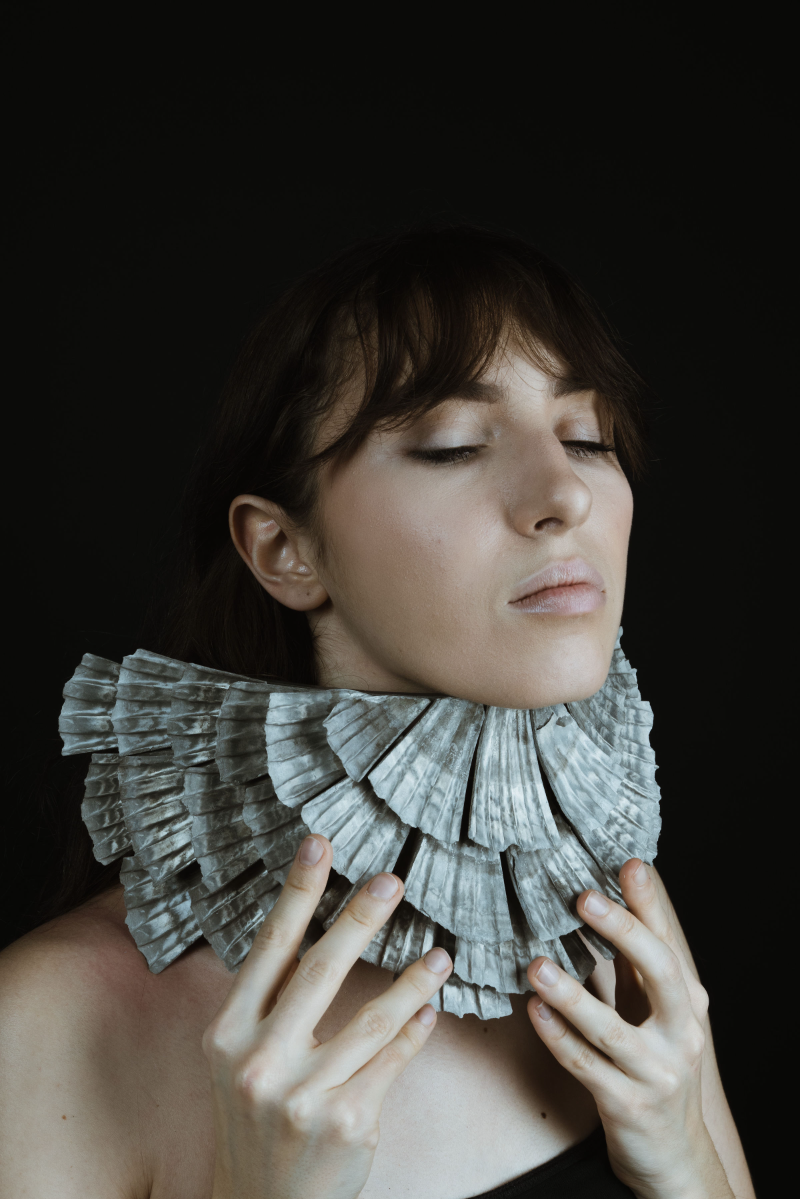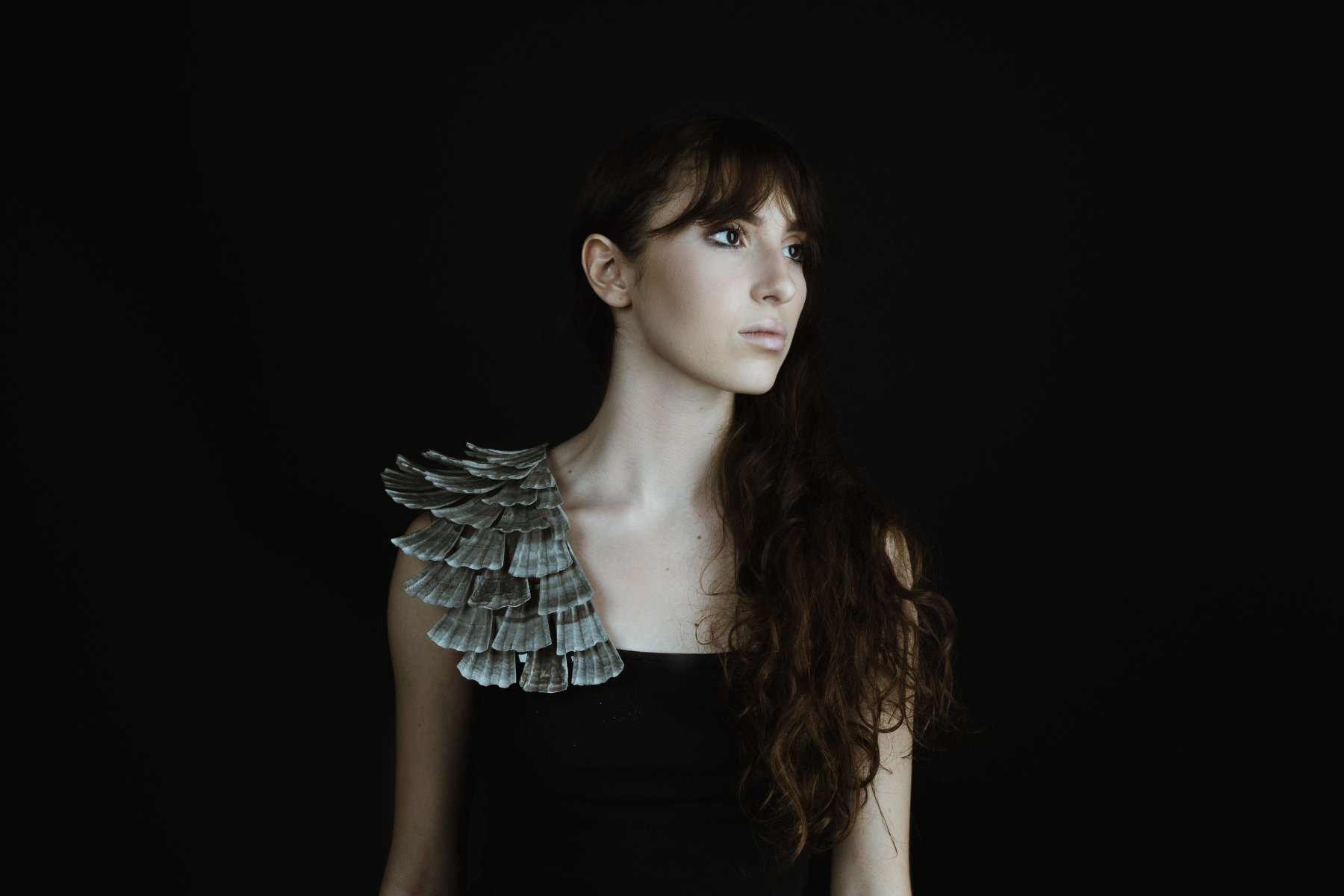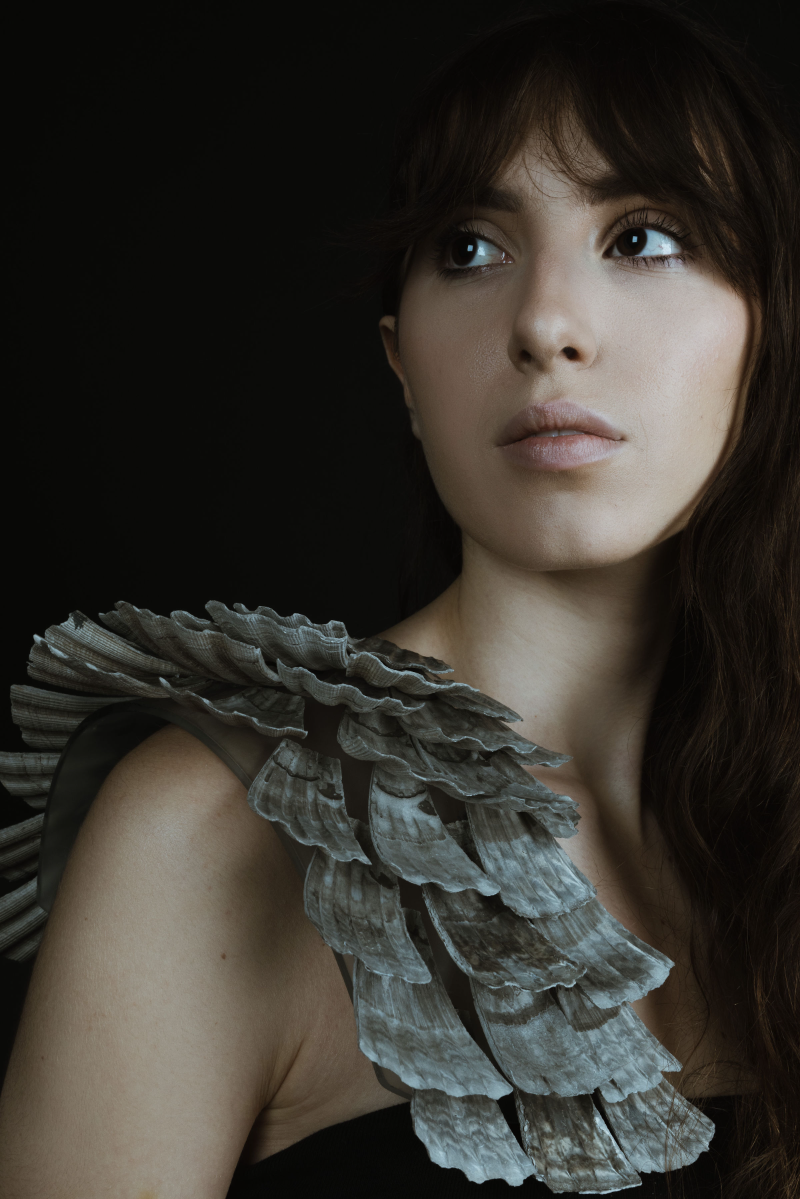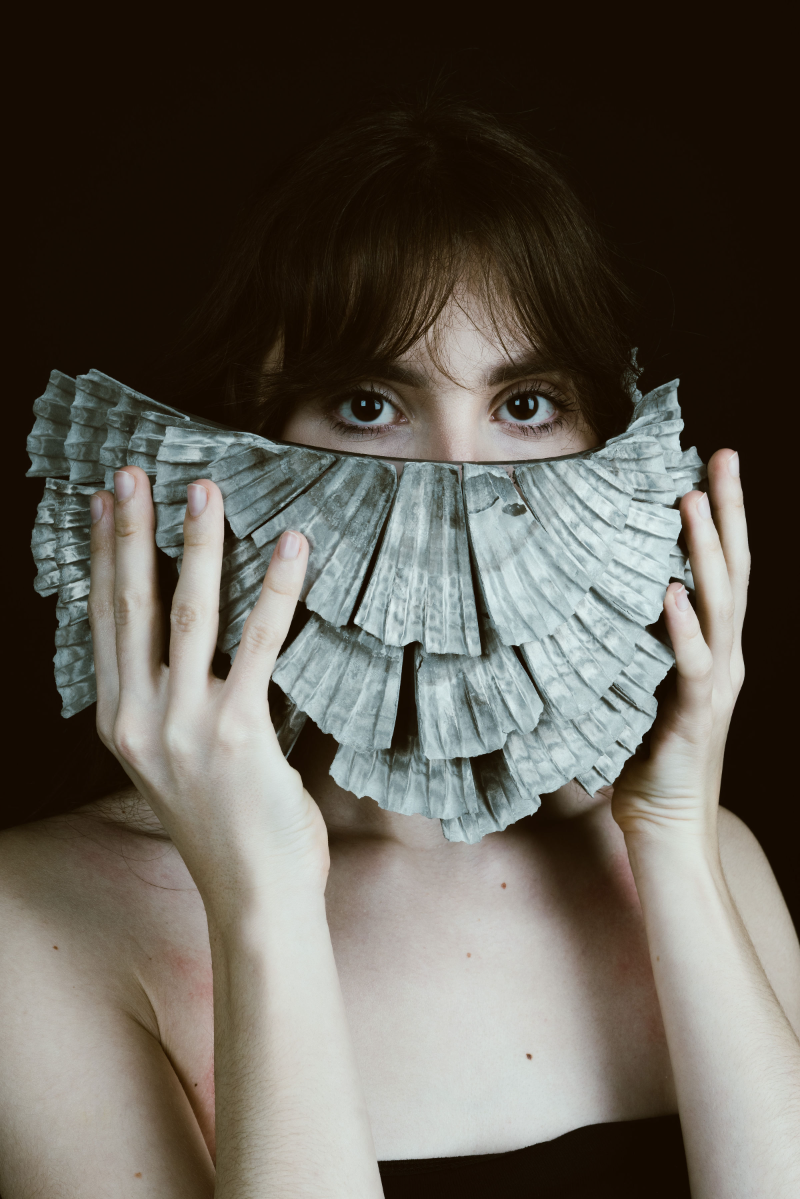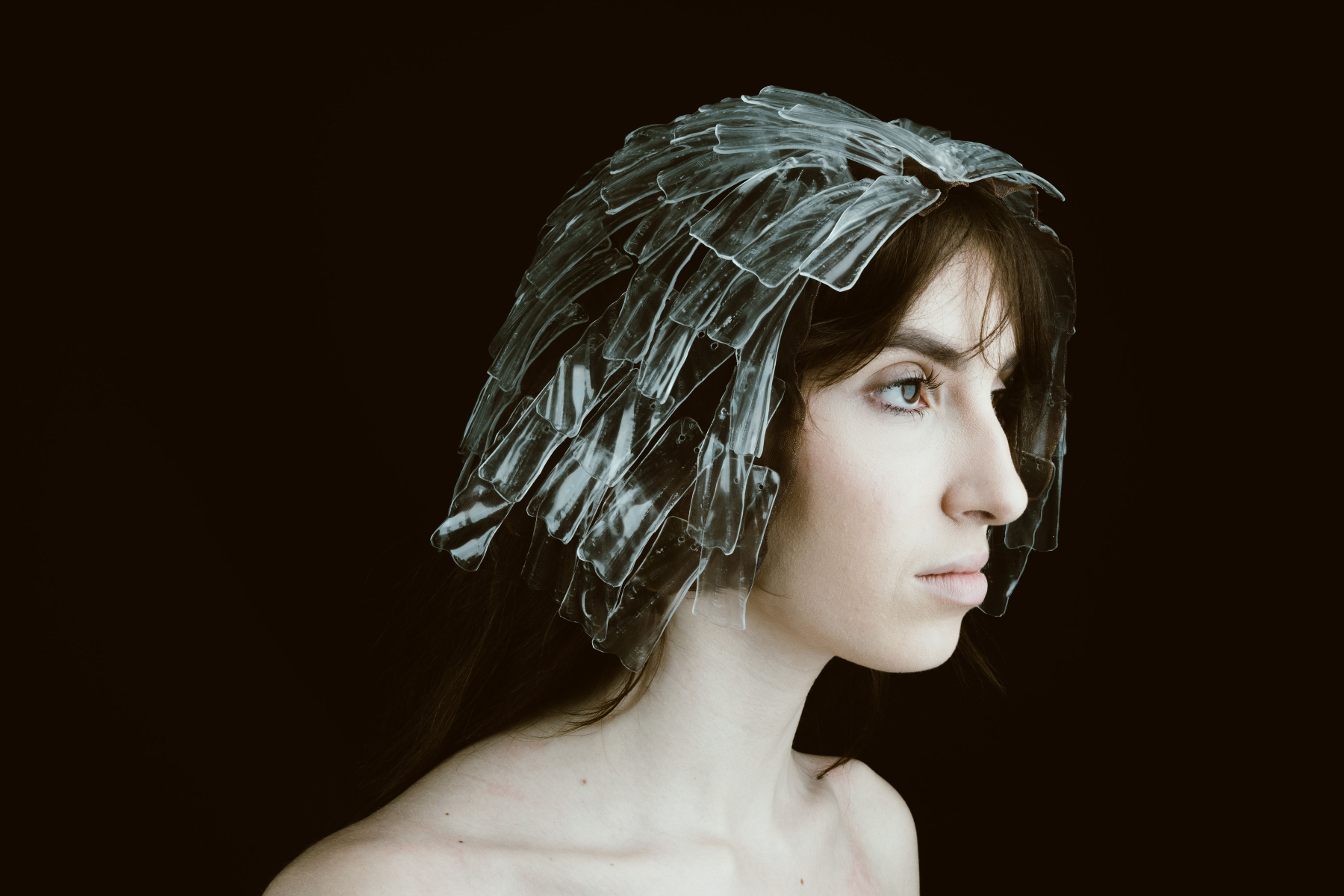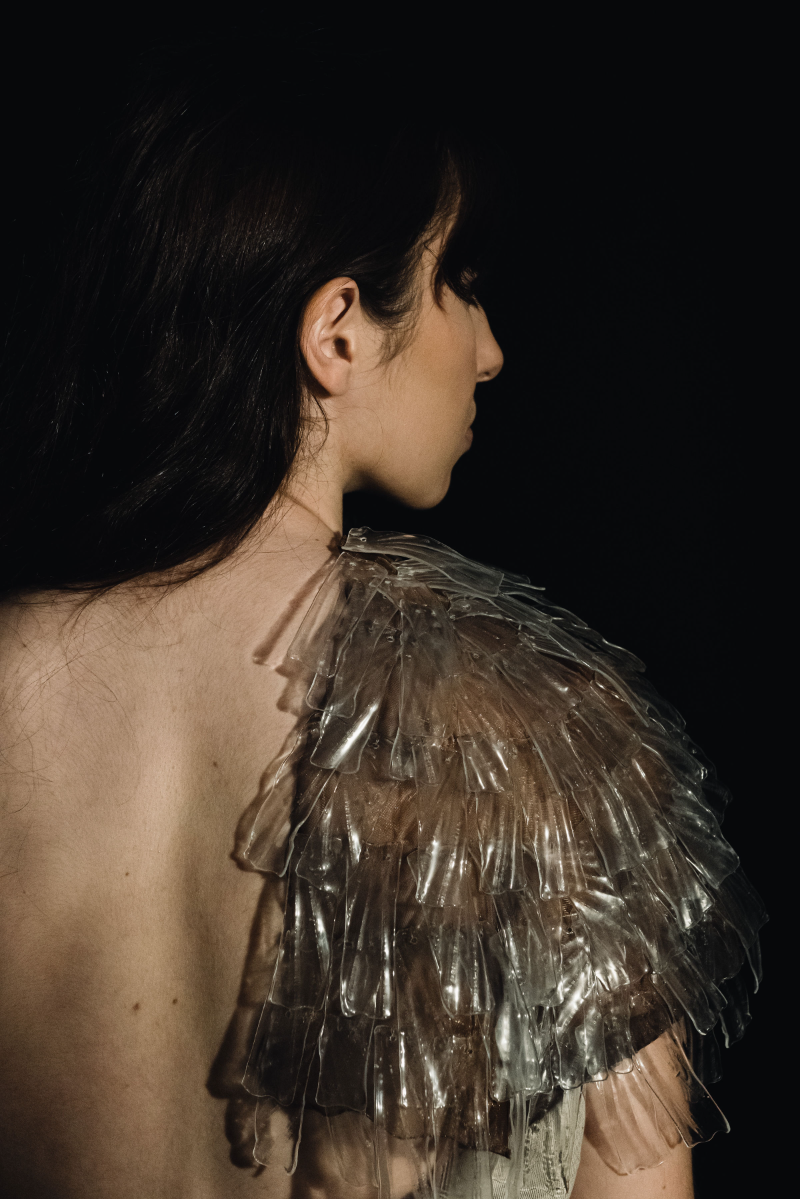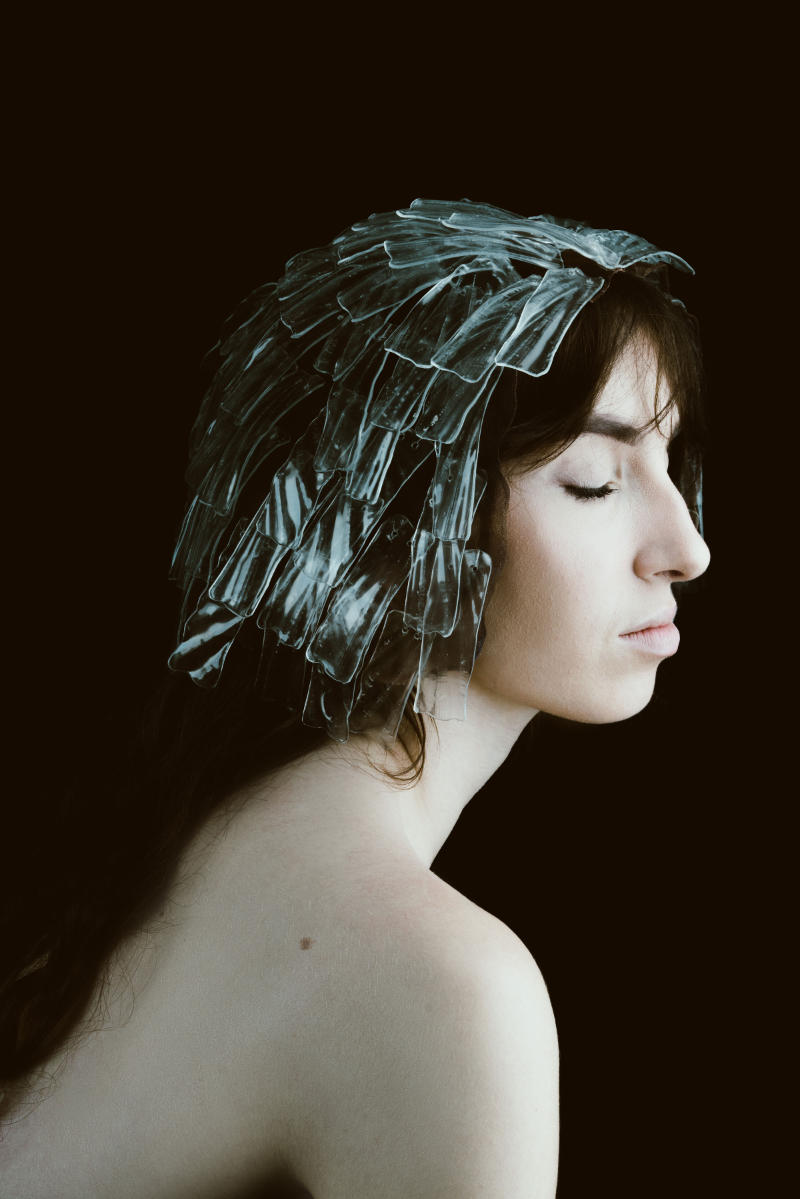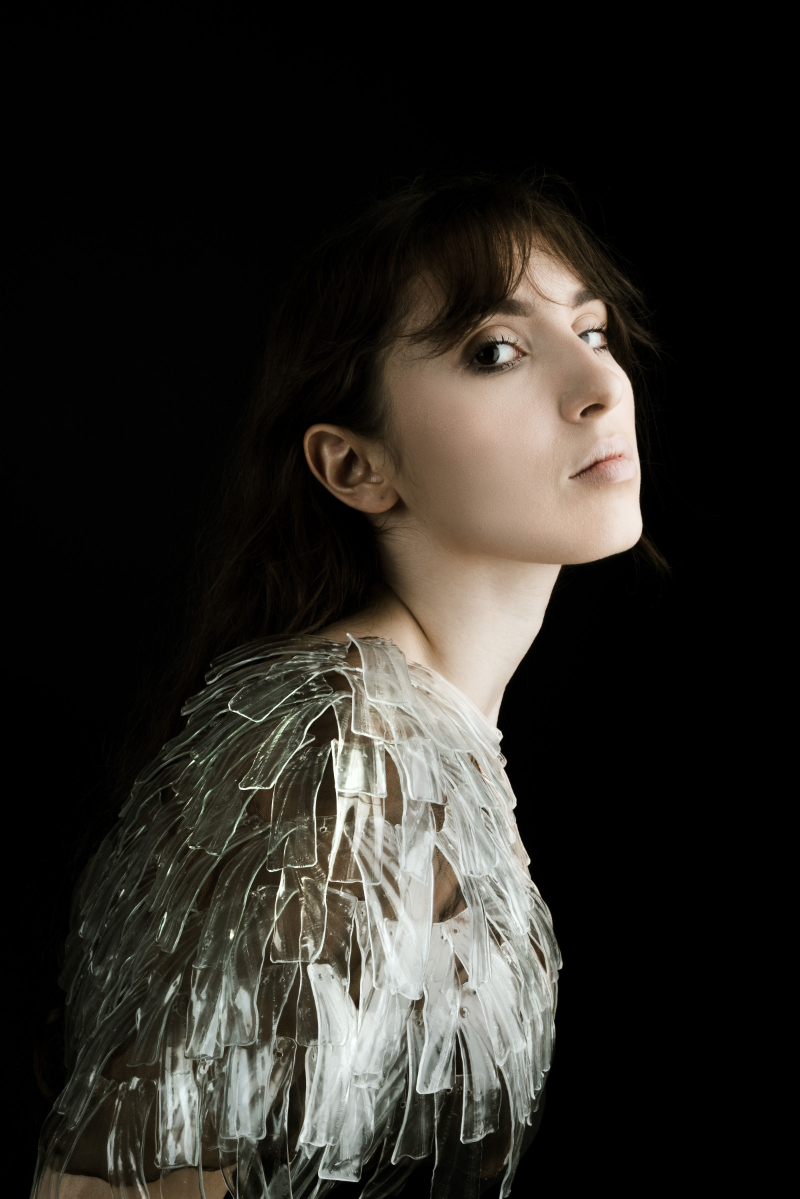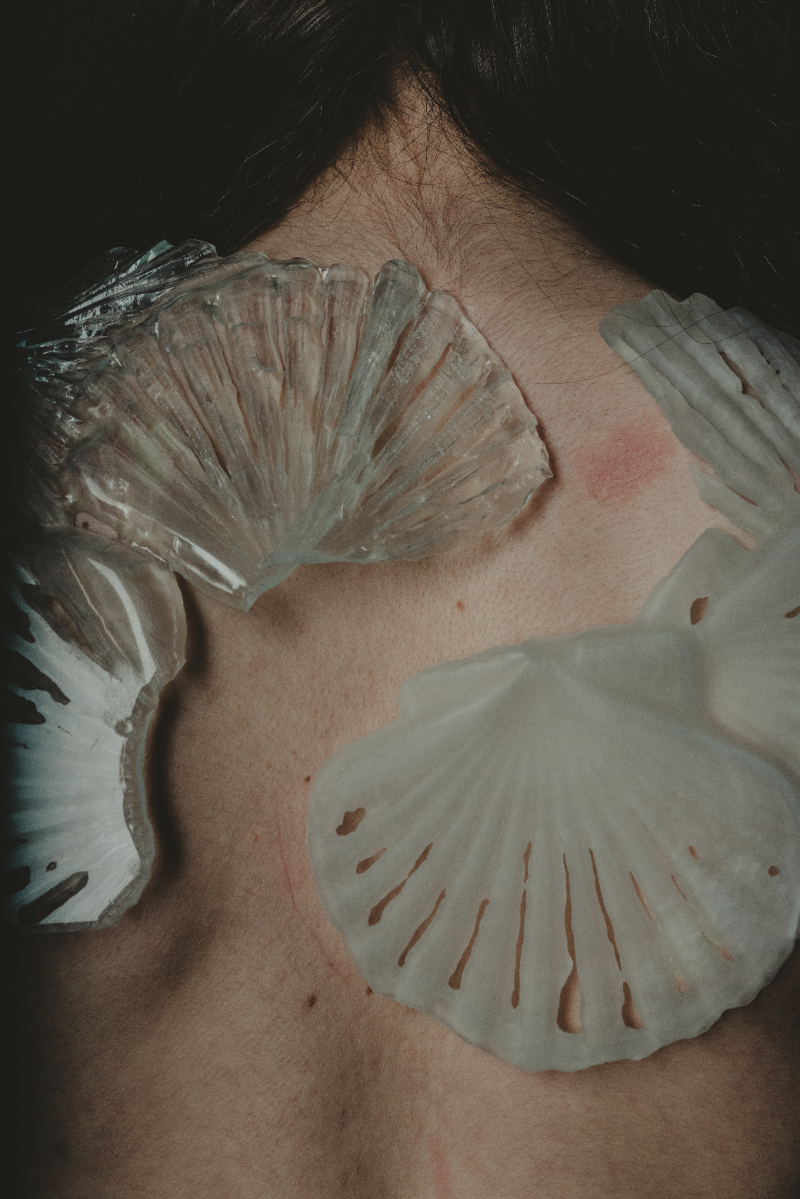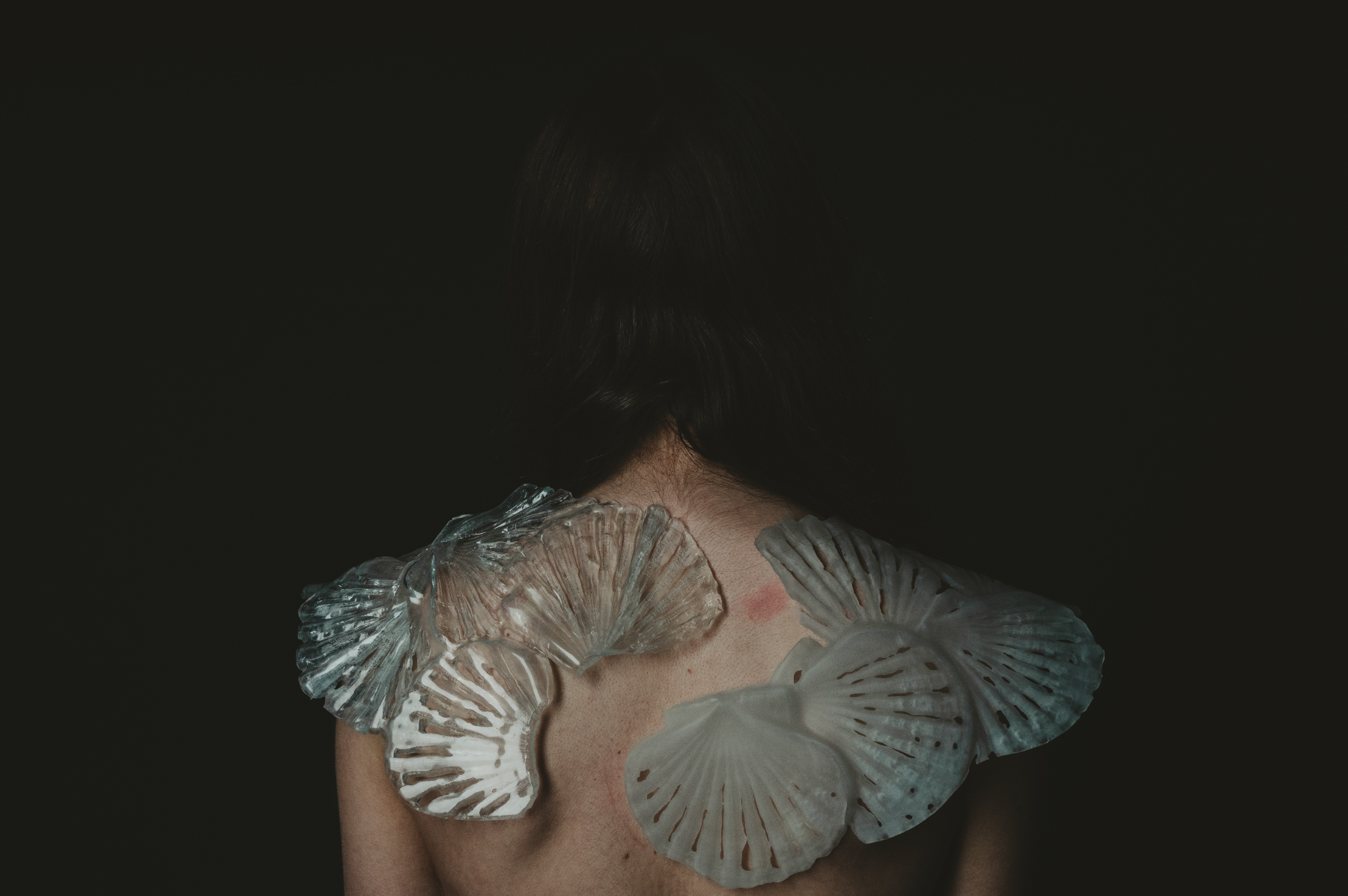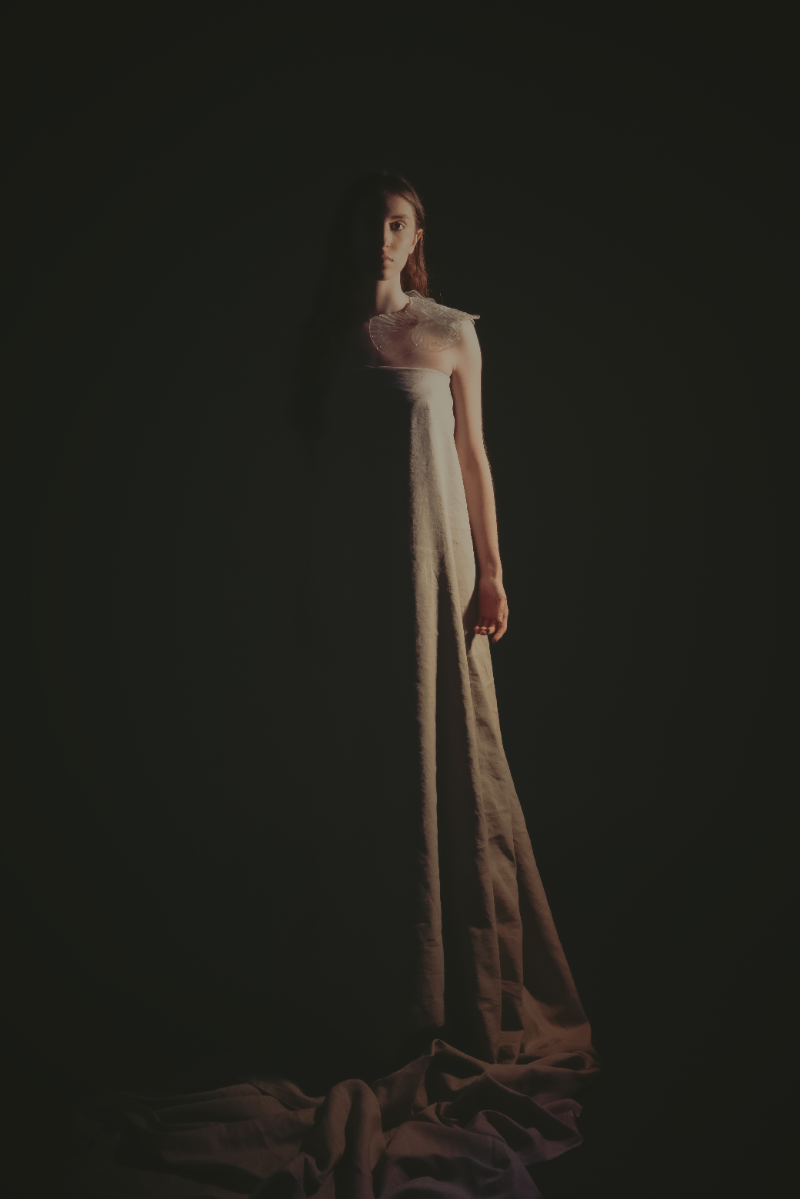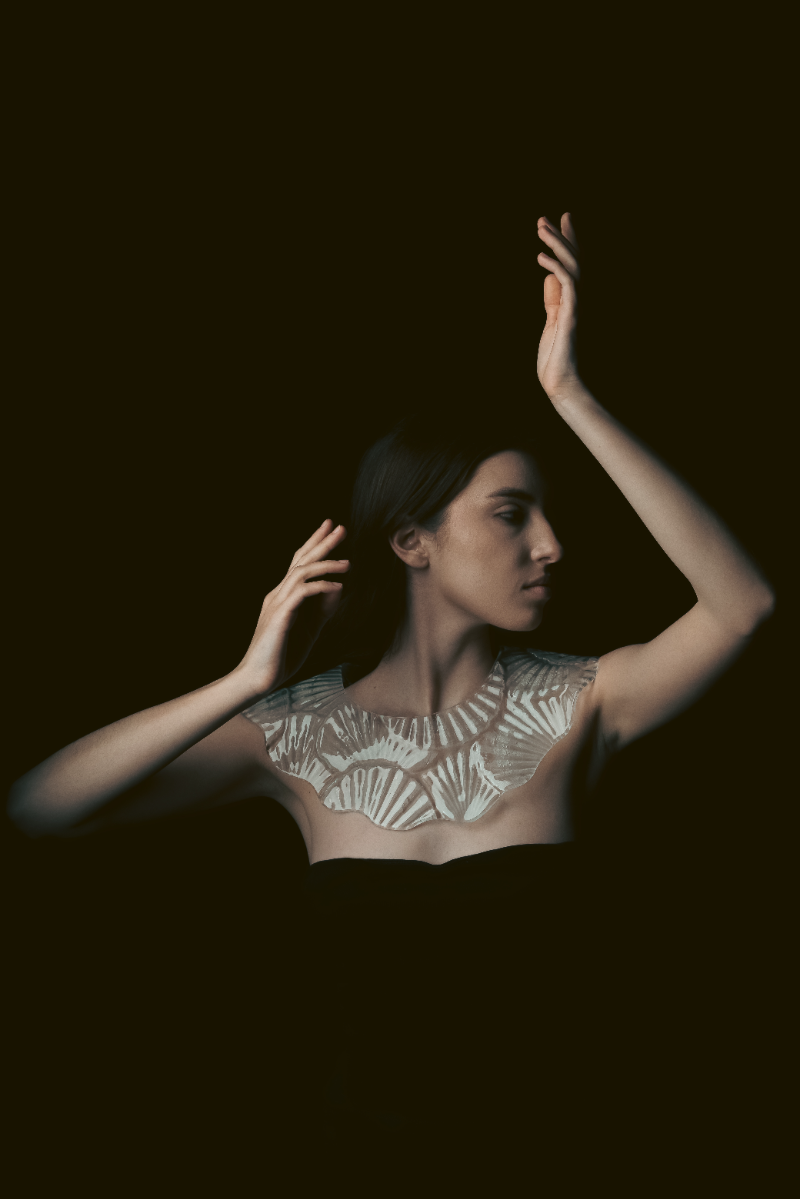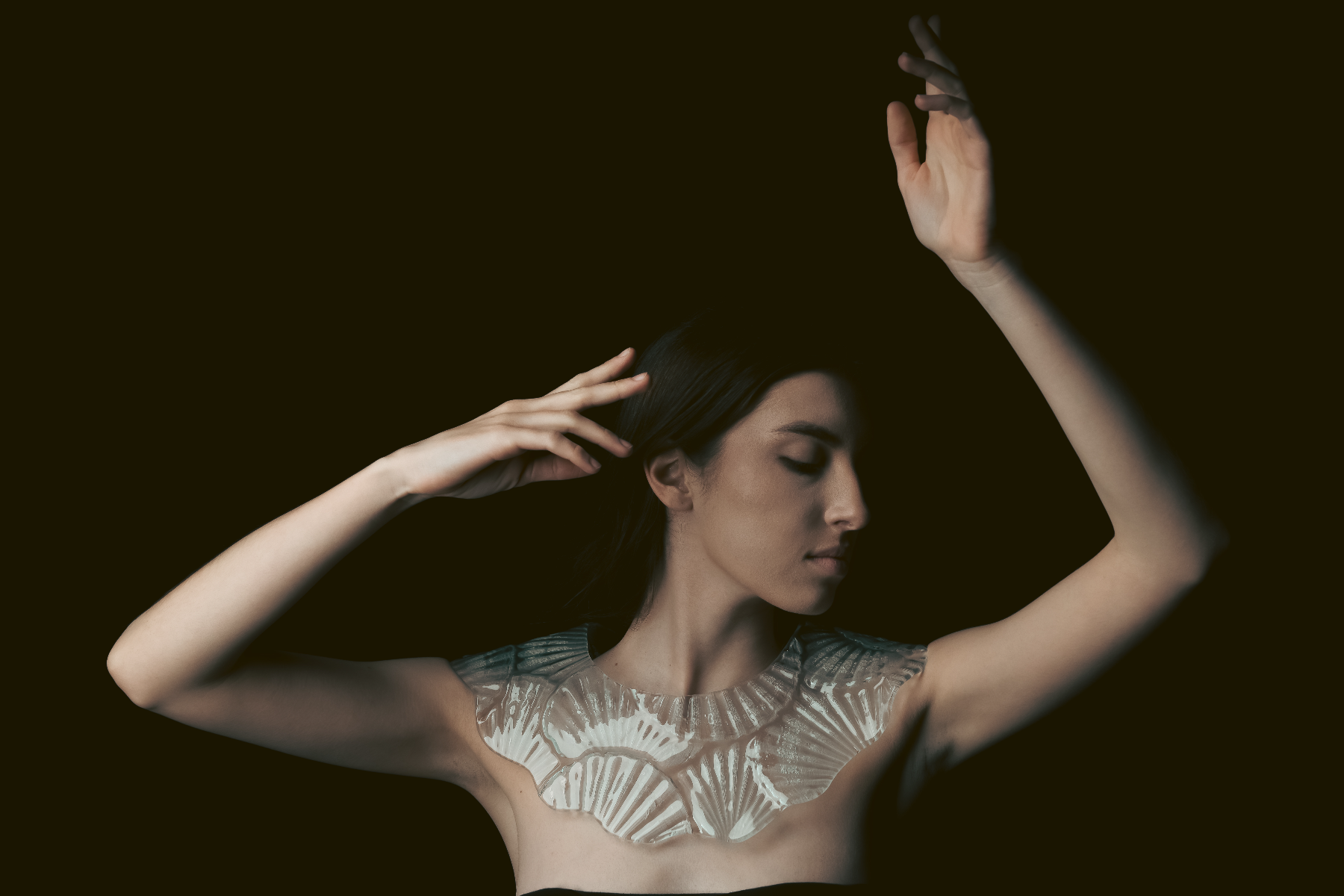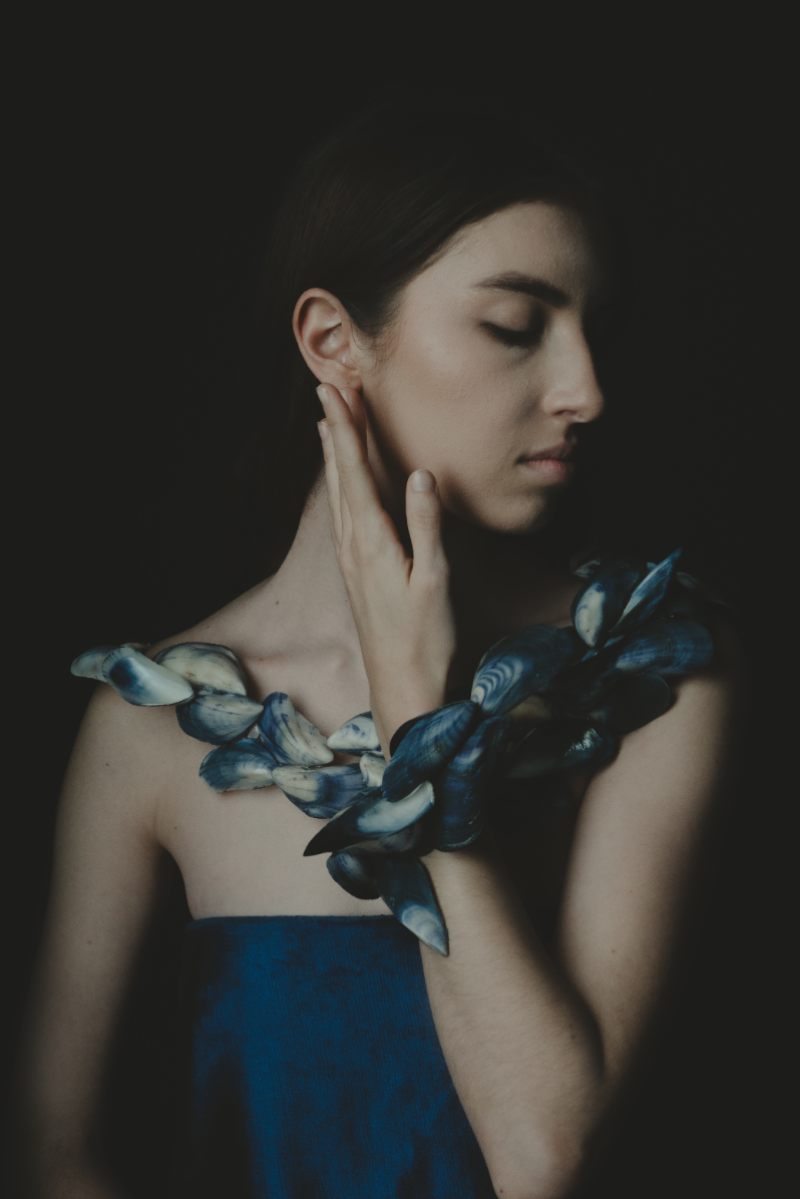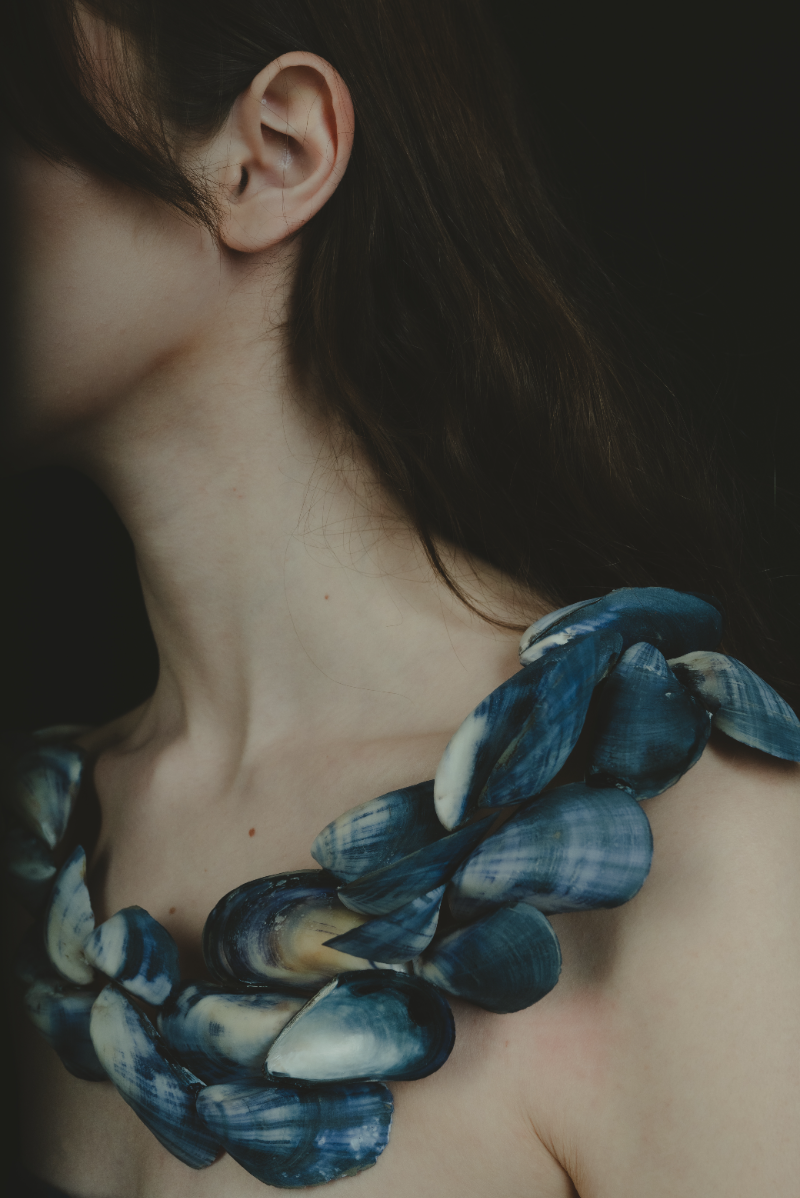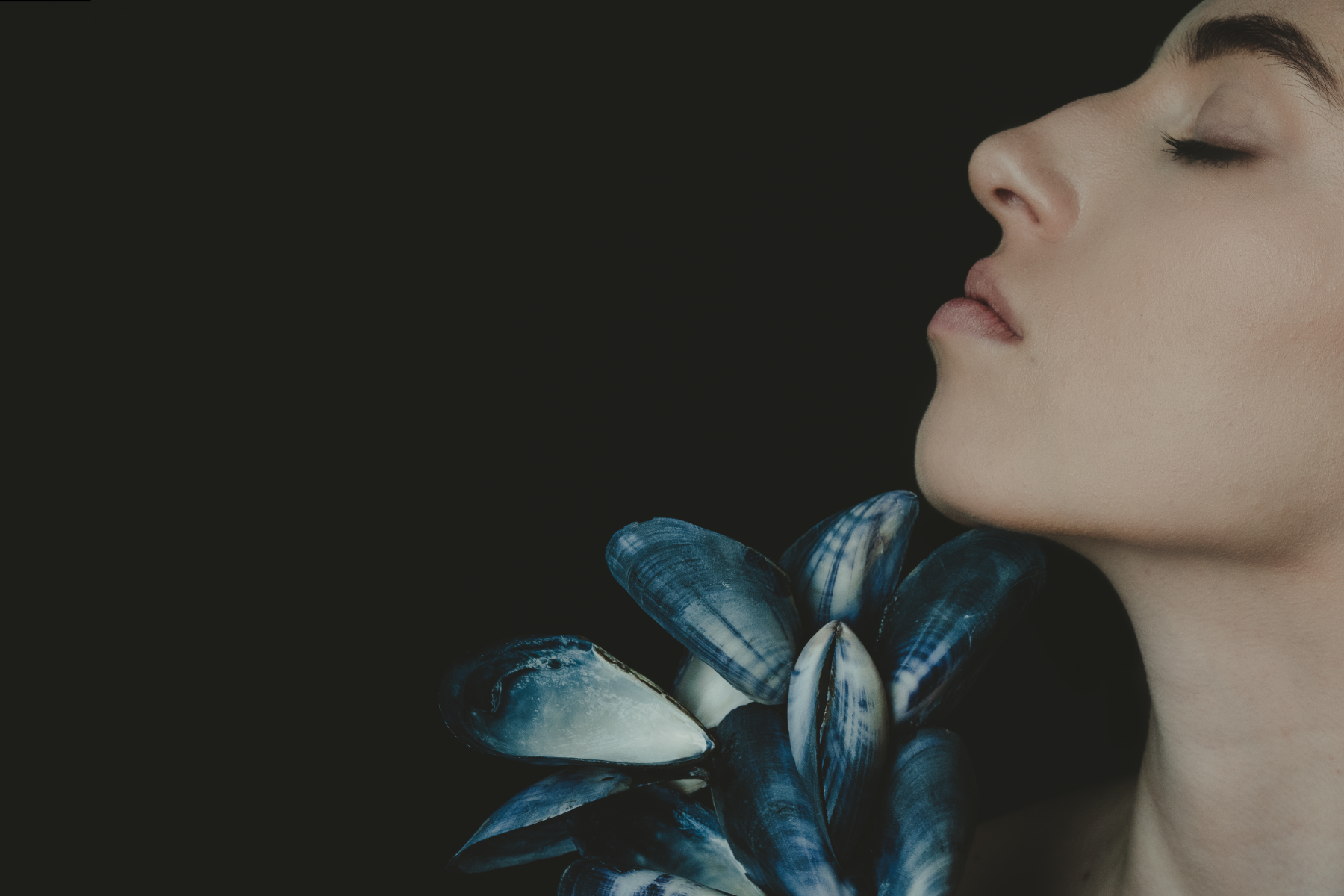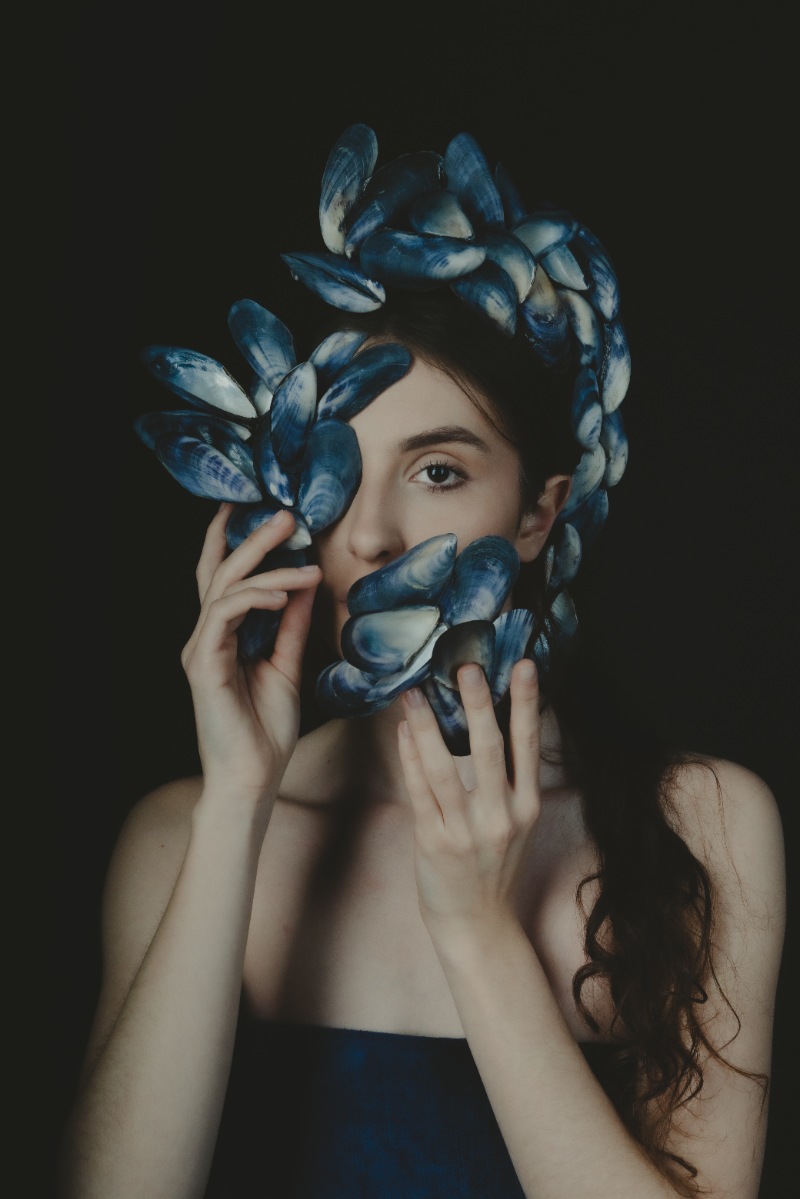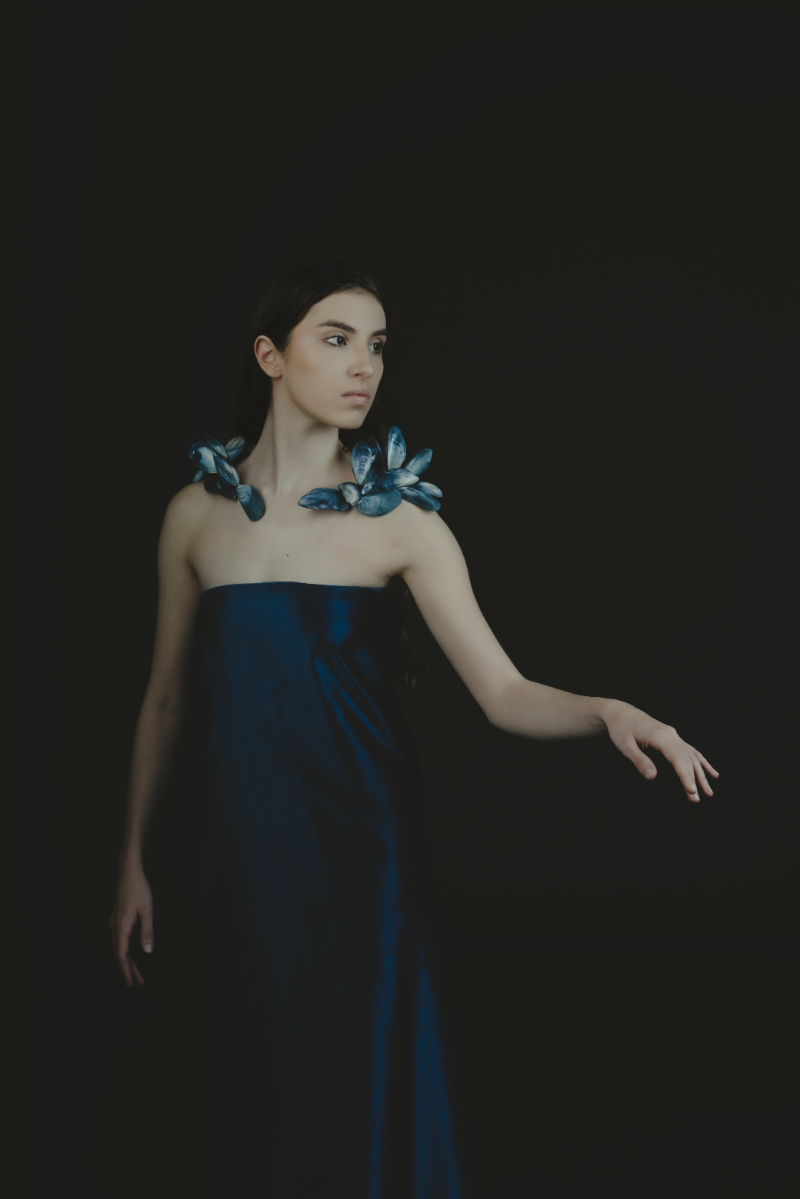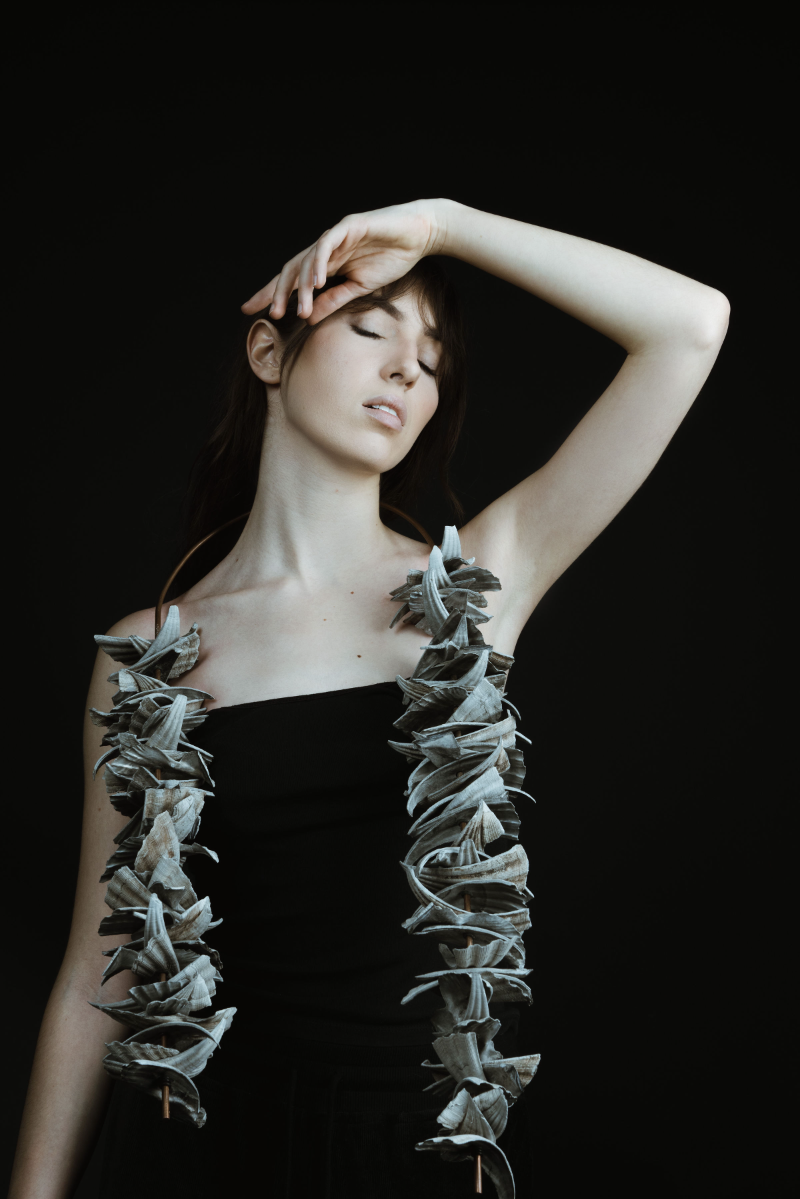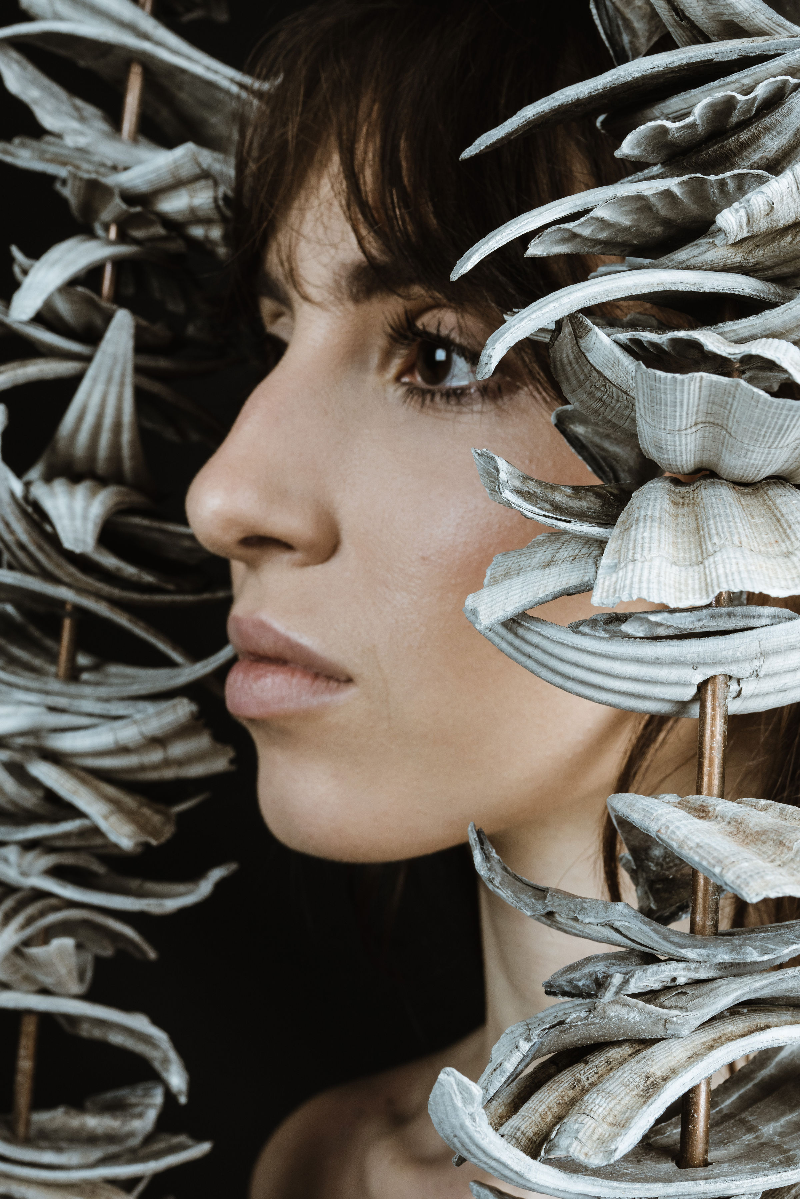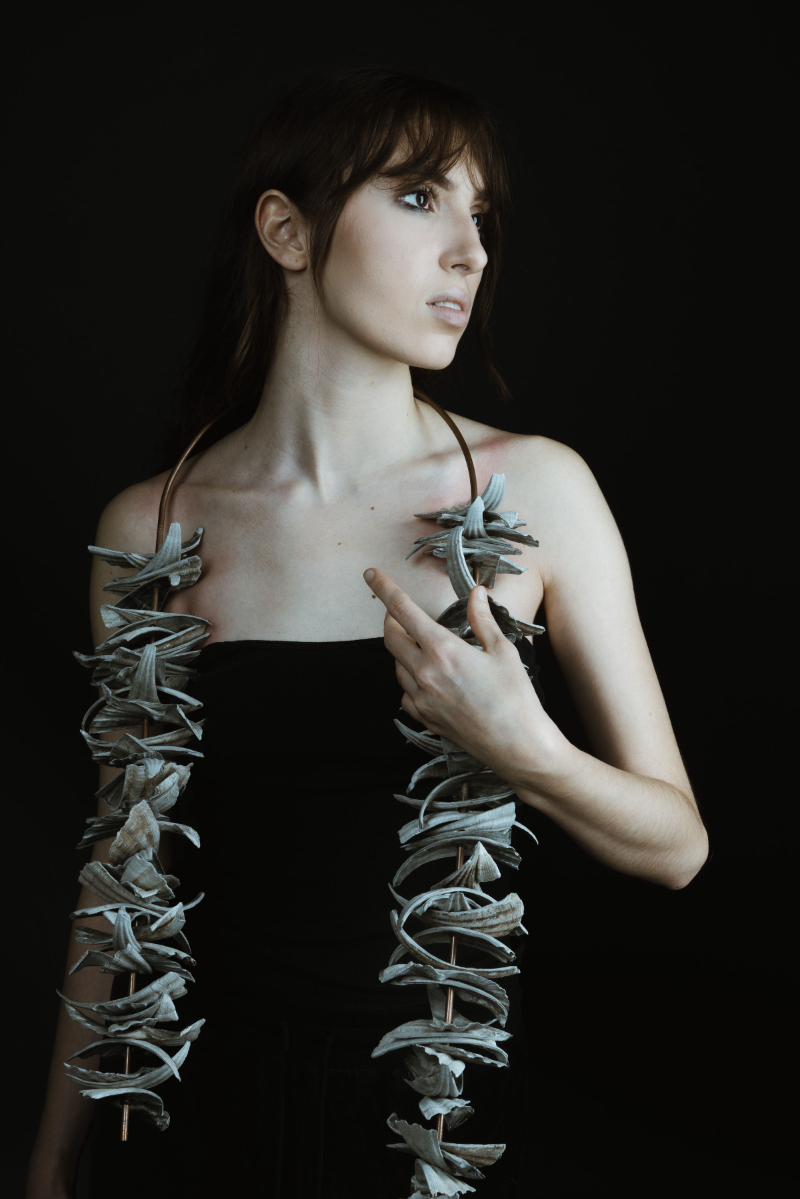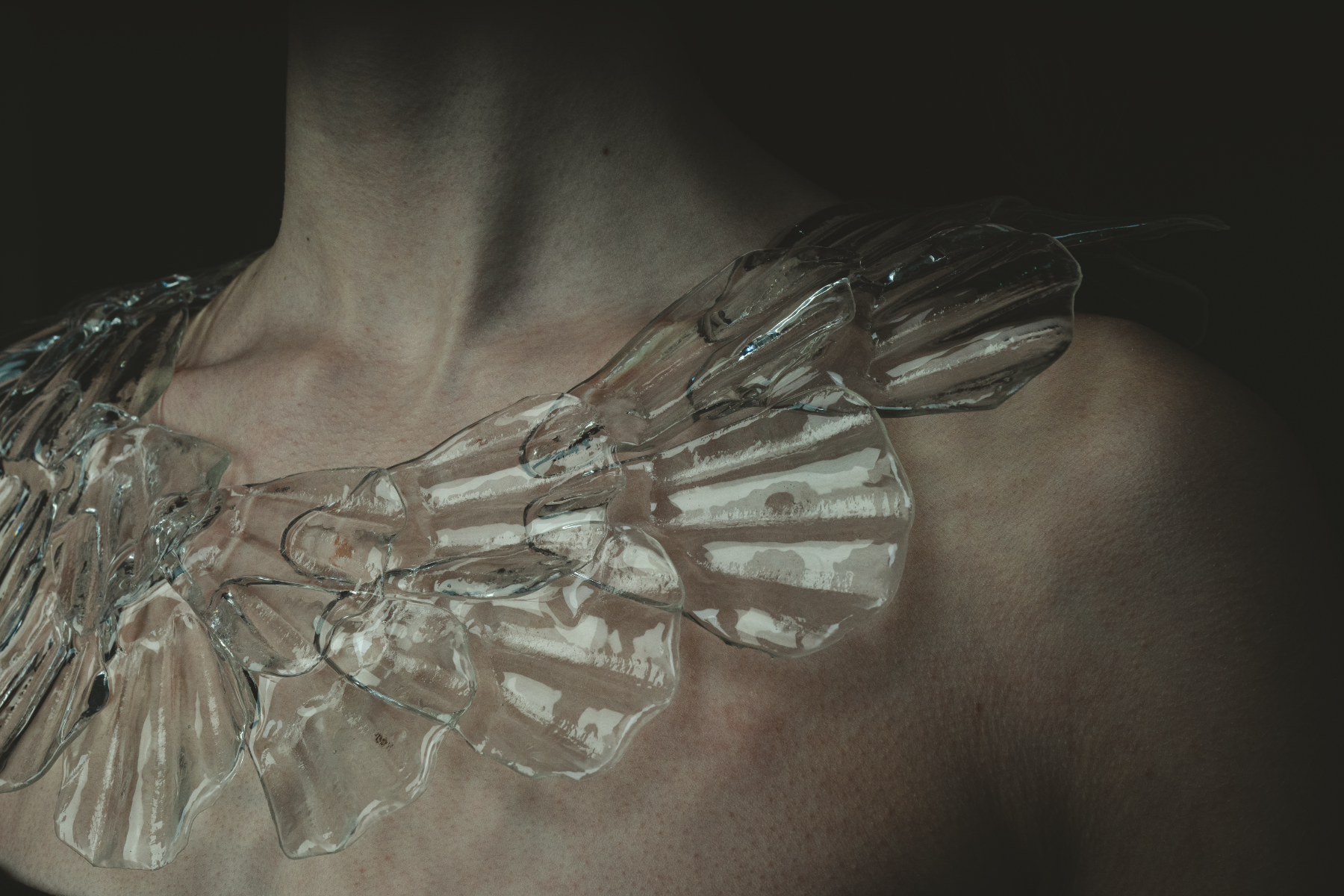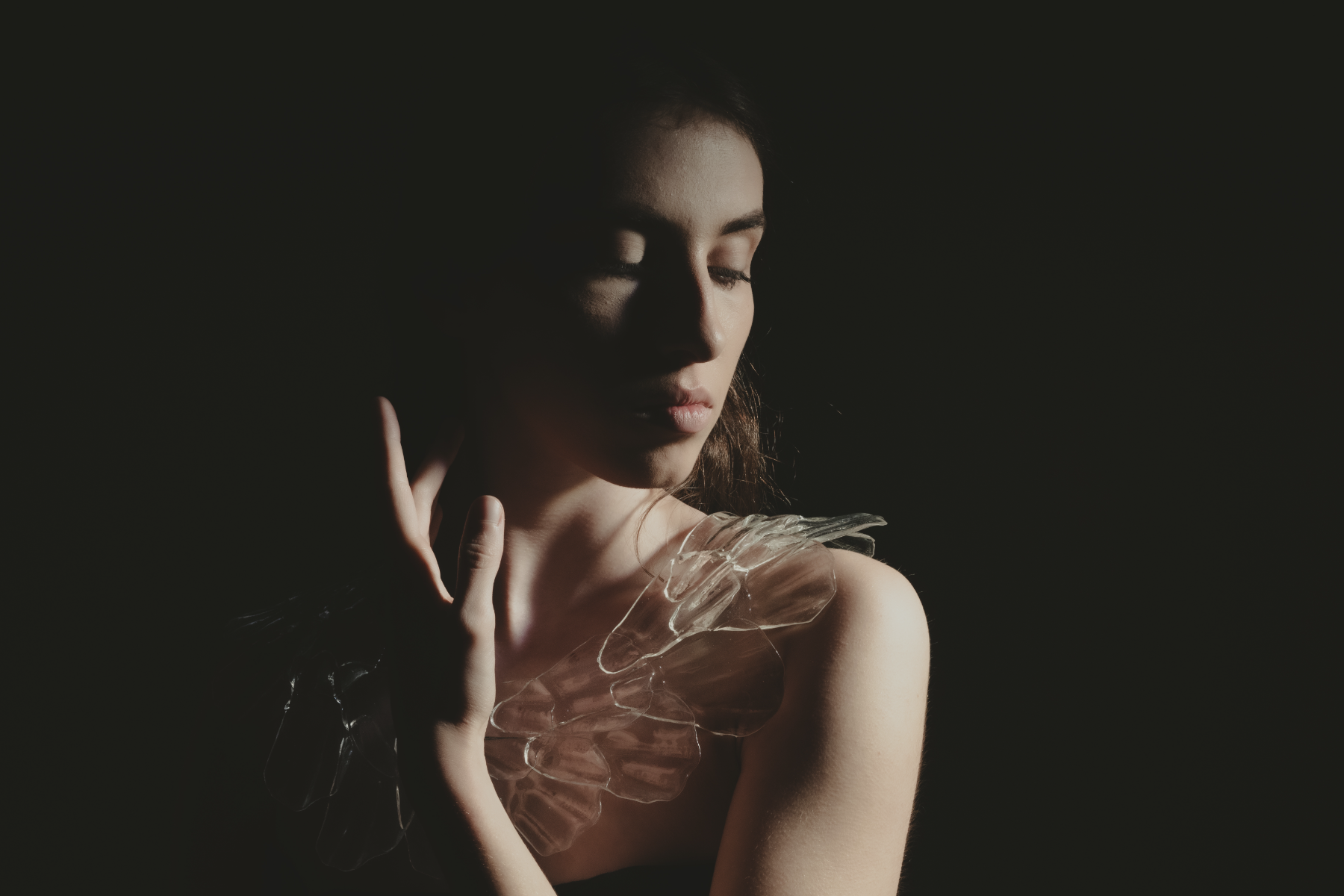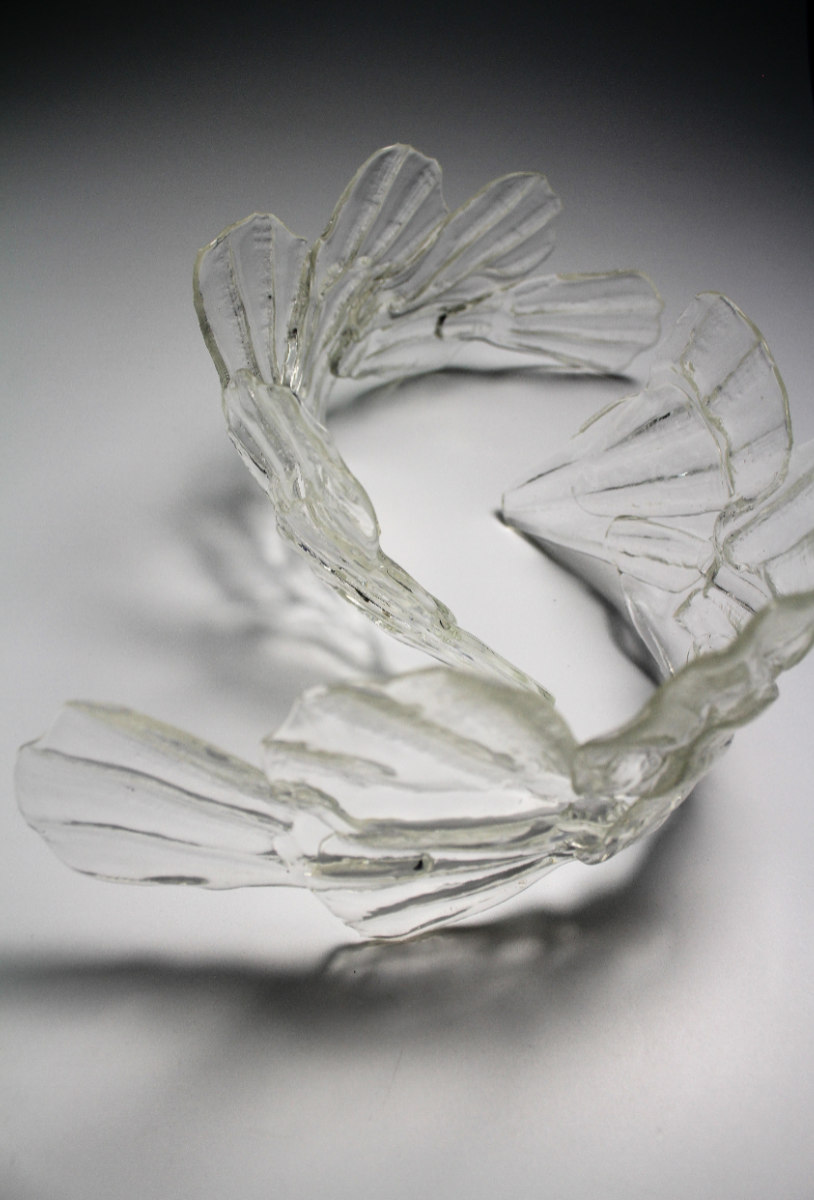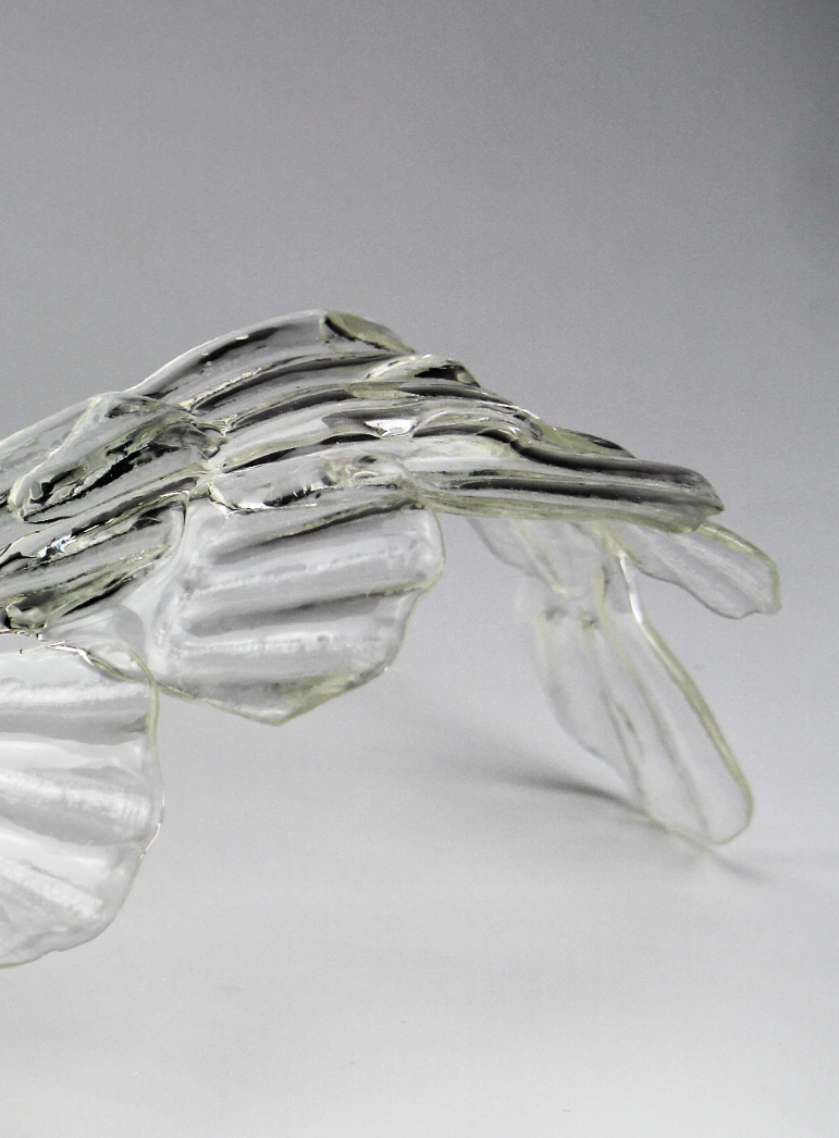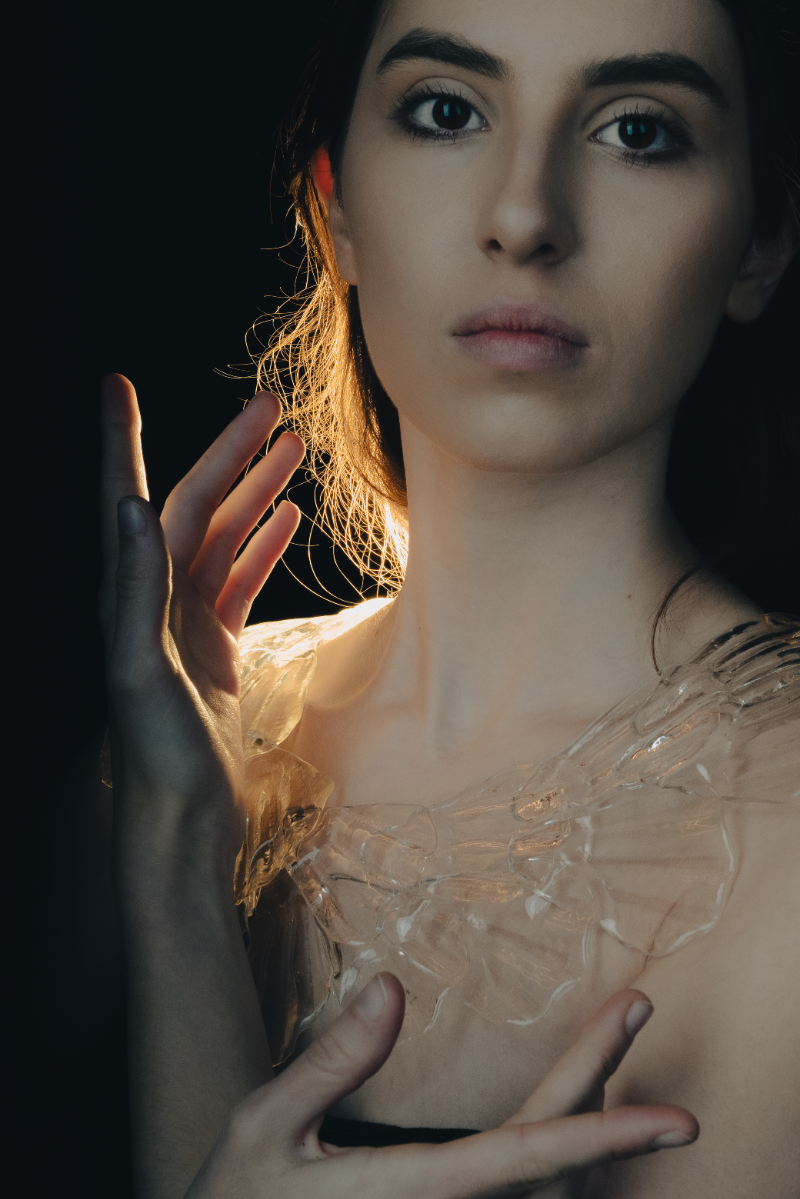Molly Ashton
Design Crafts BA(Hons)
Swansea College of Art UWTSD
Specialisms: Glass / Jewellery / Contemporary Craft
Location: Swansea, United Kingdom
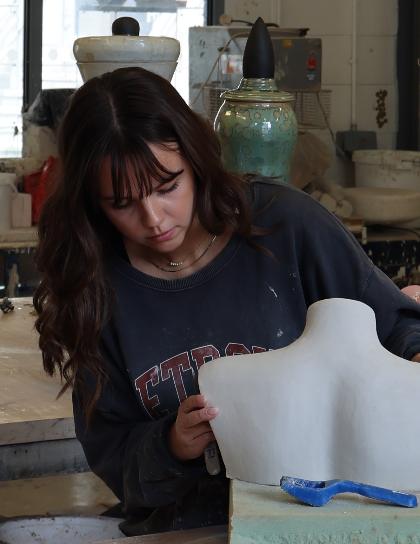

Molly Ashton

First Name: Molly
Last Name: Ashton
Specialisms: Glass / Jewellery / Contemporary Craft
Sectors:
My Location: Swansea, United Kingdom
University / College: Swansea College of Art UWTSD
Course / Program Title: Design Crafts BA(Hons)
About
I primarily work with glass and have explored techniques such as glass casting and kiln forming, to create layered, natural, and organic forms. Conceptual jewellery as wearable sculpture is at the core of my work. I explore how the use of material interacts with the human form, highlighting the figure when sculpting the glass. The body brings my work to life by giving it movement and scale. In the degree collection, I have experimented with scallop shells and mussel shells, pushing them to their limits to transform them. In nature when a shell breaks down it makes sand, a raw material used in the manufacture of glass. Through manipulation, I change the qualities of the glass to appear more delicate and represent a soft form. The relationship between the two materials emphasises the importance of nature to the pieces. My work expresses moments of balance, vulnerability and femininity.
Fired scallop shells bonded to kiln-formed glass. The shells are a waste material from a local fishmonger. In nature when a shell breaks down it makes sand, a raw material used in the manufacture of glass. The relationship between the two materials emphasises the importance of nature to the work. The work explores balance, vulnerability, and femininity; using the body to bring the piece to life. Photography by Laurentina Miksys
Competitions

Global Design Graduate Show 2023
Microscope slides formed over scallop shells and stitched to copper mesh. The weight of the piece allows it to slump over the body to take its form. The shells are a waste material from a local fishmonger. In nature when a shell breaks down it makes sand, a raw material used in the manufacture of glass. The relationship between the two materials emphasises the importance of nature to the work. The work explores balance, vulnerability, and femininity; using the body to bring the piece to life. Photography by Laurentina Miksys
Competitions

Global Design Graduate Show 2023
Glass slumped over scallop shells and formed around a torso. The shells are a waste material from a local fishmonger. In nature when a shell breaks down it makes sand, a raw material used in the manufacture of glass. The relationship between the two materials emphasises the importance of nature to the work. The work explores balance, vulnerability, and femininity; using the body to bring the piece to life. Photography by Laurentina Miksys
Competitions

Global Design Graduate Show 2023
Using mussel shells to create wearable sculptures that balance on the body. This project explores experimentation and the use of natural materials in contemporary craft. The shells are a waste material from a local fishmonger. In nature when a shell breaks down it makes sand, a raw material used in the manufacture of glass. The relationship between the two materials emphasises the importance of nature to the work. The work explores balance, vulnerability, and femininity; using the body to bring the piece to life. Photography by Laurentina Miksys
Competitions

Global Design Graduate Show 2023
Fired scallop shells stacked onto a copper rod. This piece is both sculptural and can be worn around the neck. It is very different from the rest of the collection as the stacked shells create interesting shapes. The shells are a waste material from a local fishmonger. In nature when a shell breaks down it makes sand, a raw material used in the manufacture of glass. The relationship between the two materials emphasises the importance of nature to the work. The work explores balance, vulnerability, and femininity; using the body to bring the piece to life. Photography by Laurentina Miksys
Competitions

Global Design Graduate Show 2023
Cast glass using 3D scanning and printing of the shell's form and texture. Slumped over a ceramic torso to fit the body's form. The shells are a waste material from a local fishmonger. In nature when a shell breaks down it makes sand, a raw material used in the manufacture of glass. The relationship between the two materials emphasises the importance of nature to the work. The work explores balance, vulnerability, and femininity; using the body to bring the piece to life. Photography by Laurentina Miksys
Competitions

